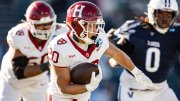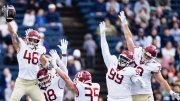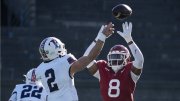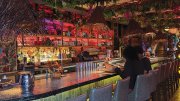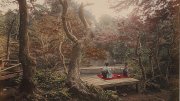T minus two weeks to the opening ceremonies of the Olympic Games in China. Amid the media throng, several Crimson correspondents offer insightful reports.
James Fallows ’70 is blogging for the Atlantic about traffic, air quality, and everything else. Today, he reports, this notice, at once humorous and unsettling, was posted in his Beijing apartment building: "PSB [Public Security Bureau] personnel may conduct surprised [sic] inspection of our property without notification to examine your passport documents including checking your luggage and personal belongings, etc."
The Wall Street Journal's China Journal blog has a daily roundup of the best from other blogs, along with their own entries by authors including Geoffrey Fowler ’00, a former Ledecky Undergraduate Fellow at Harvard Magazine. Fowler's recent dispatches include one on the legions of corporate executives expected to descend on Beijing for the Games, and another detailing the painstaking process of designing the official Olympic mascots, complete with a slideshow. Artist Han Meilin drew more than a thousand models before settling on the final five: a fish, a panda, an antelope, a swallow, and the Olympic flame. Han's original concept was to represent the traditional Chinese elements of fire, wood, water, gold, and earth. Alas, Fowler writes, "Then the bureaucrats got involved. 'There had to be a panda, even though you'd think the public would have had enough of them,' says the 72-year-old artist."
Evan Osnos ’98 is the Beijing bureau chief for the Chicago Tribune. The newspaper has a web page with all Osnos's recent stories and a seven-minute video interview in which he talks about his experiences reporting from China and the Middle East, and about the role of the foreign correspondent in the world today. He also has a great article in the new issue of the New Yorker. "Angry Youth" profiles Tang Jie, the maker of a popular YouTube video that embodied the neoconservative nationalist sentiments taking hold among some Chinese youth. The portrait is nuanced, presenting Tang as a sympathetic figure whose motives are understandable, even if the rhetoric they give rise to—demonizing the United States and downplaying events in Tibet, for instance—is not:
Like many of his peers, Tang couldn't figure out why foreigners were so agitated about Tibet—an impoverished backwater, as he saw it, that China had tried for decades to civilize. Boycotting the Beijing Games in the name of Tibet seemed as logical to him as shunning the Salt Lake City Olympics to protest America's treatment of the Cherokee.
See also this piece on Zou Shiming, the captain of China's national boxing team and the first boxer in Chinese history to be considered a contender for an Olympic gold medal; and this one on the "national scramble" to learn English in time for the Olympics.
For further reading on contemporary China, the New York Times recommends Out of Mao's Shadow, a new book by Philip Pan ’93, former Beijing bureau chief for the Washington Post (also mentioned in the Off the Shelf column in the current issue of Harvard Magazine).
And coming out October 7 is Factory Girls by Leslie Chang ’91, who spent 10 years in China with the Wall Street Journal. The book explores the lives of migrant workers, taking readers "inside a sneaker factory so large that it has its own hospital, movie theater, and fire department; to posh karaoke bars that are fronts for prostitution; to makeshift English classes where students shave their heads in monklike devotion and sit day after day in front of machines watching English words flash by; and back to a farming village for the Chinese New Year, revealing the poverty and idleness of rural life that drive young girls to leave home in the first place." The China Beat blog has an essay by Chang about the experience of writing the book. And in this feature from the May 2008 issue of National Geographic, Chang zooms in on China's middle class and the pressures that accompany economic growth.
